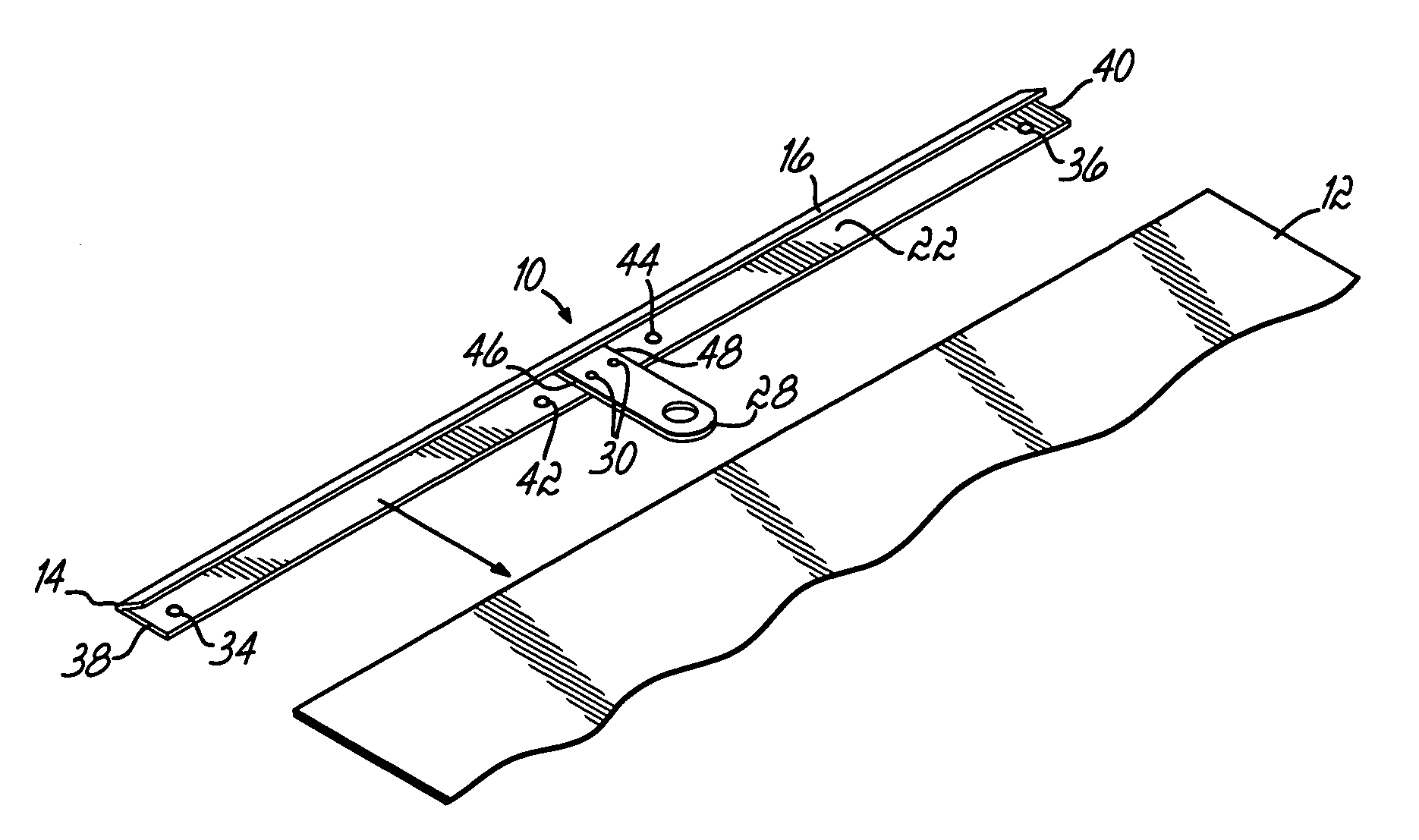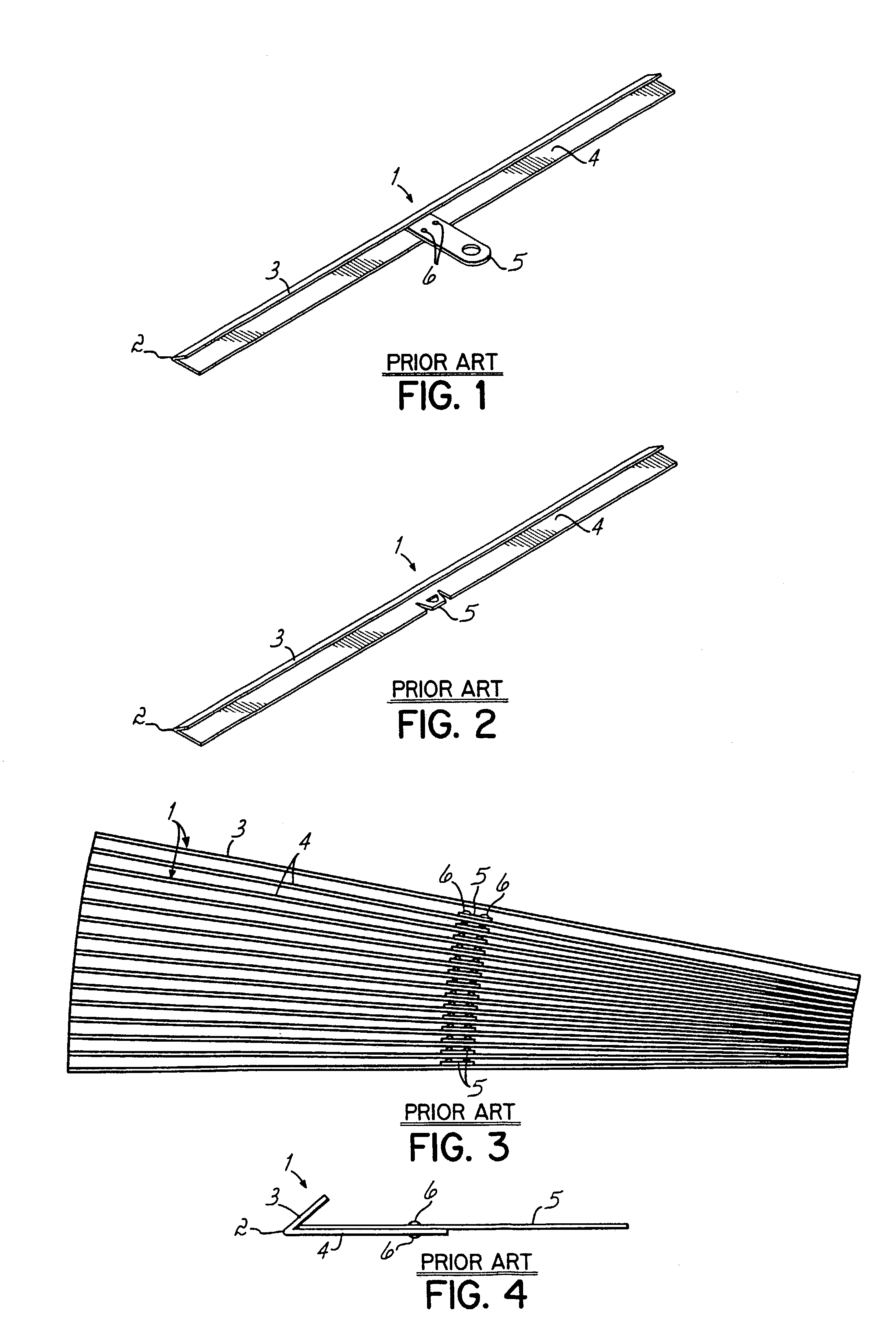Calendar slide
- Summary
- Abstract
- Description
- Claims
- Application Information
AI Technical Summary
Benefits of technology
Problems solved by technology
Method used
Image
Examples
Embodiment Construction
[0029]Presently preferred embodiments of the present inventive slide 10 are seen in FIGS. 5 through 11. It will be understood by those in the art that, while the present invention may be described as a calendar slide 10, the slide 10 may be used to bind and hang or display any other desired display item, such as a poster, document, banner, wall hanging, or workpiece 12.
[0030]The calendar slide 10 is typically made from a strip of sheet metal, although other substances with similar characteristics could be used. The typical sheet metal used is a cold rolled mild steel plate with a thickness of approximately 0.0062 inches; however, other types and / or sizes of metal could also be used. The sheet metal is bent to form longitudinal bend 14, which creates a generally V-shaped channel from the sheet metal strip. The longitudinal bend 14 in the sheet metal channel separates a first bend portion or leg 16 and a wider second bend portion or leg 18. According to one embodiment, the width of th...
PUM
 Login to View More
Login to View More Abstract
Description
Claims
Application Information
 Login to View More
Login to View More - R&D
- Intellectual Property
- Life Sciences
- Materials
- Tech Scout
- Unparalleled Data Quality
- Higher Quality Content
- 60% Fewer Hallucinations
Browse by: Latest US Patents, China's latest patents, Technical Efficacy Thesaurus, Application Domain, Technology Topic, Popular Technical Reports.
© 2025 PatSnap. All rights reserved.Legal|Privacy policy|Modern Slavery Act Transparency Statement|Sitemap|About US| Contact US: help@patsnap.com



